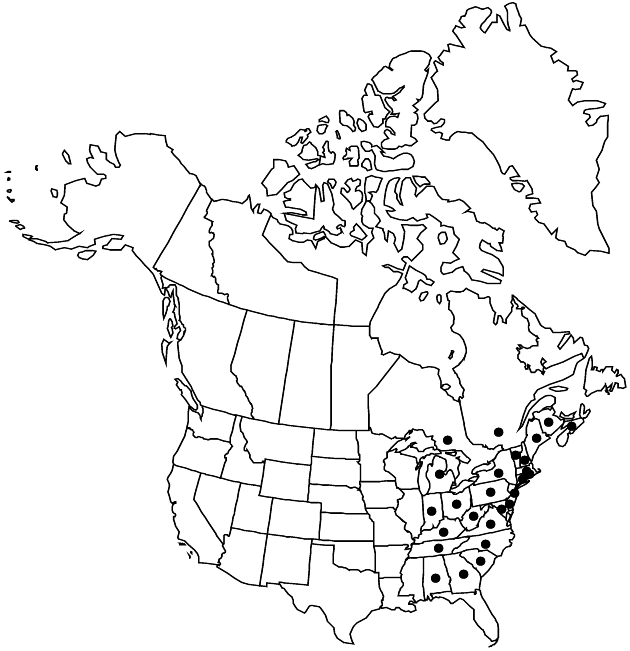Difference between revisions of "Hieracium paniculatum"
Sp. Pl. 2: 802. 1753.
imported>Volume Importer |
imported>Volume Importer |
||
| Line 50: | Line 50: | ||
|publication year=1753 | |publication year=1753 | ||
|special status=Endemic | |special status=Endemic | ||
| − | |source xml=https:// | + | |source xml=https://bitbucket.org/aafc-mbb/fna-data-curation/src/2e0870ddd59836b60bcf96646a41e87ea5a5943a/coarse_grained_fna_xml/V19-20-21/V19_402.xml |
|tribe=Asteraceae tribe Cichorieae | |tribe=Asteraceae tribe Cichorieae | ||
|genus=Hieracium | |genus=Hieracium | ||
Latest revision as of 19:51, 5 November 2020
Plants 30–90 cm. Stems proximally usually glabrous, sometimes piloso-hirsute (hairs 3–8+ mm) and/or stellate-pubescent, distally usually glabrous. Leaves: basal 0(–2), cauline 6–12+; blades elliptic or oblanceolate to lanceolate, 30–80(–150) × 6–25(–35) mm, lengths 3–6+ times widths, bases cuneate, margins usually toothed, sometimes denticulate or entire, apices acute to acuminate, faces glabrous or piloso-hirsute (hairs 1–4+ mm). Heads (6–)12–50+ in corymbiform to paniculiform arrays. Peduncles usually glabrous, sometimes stipitate-glandular. Calyculi: bractlets 8–13+. Involucres campanulate to cylindric, 6–7 mm. Phyllaries 8–13+, apices acute to acuminate, abaxial faces usually glabrous, sometimes stipitate-glandular. Florets 8–20(–30); corollas ochroleucous to yellow, 5–8 mm. Cypselae columnar, 2–2.5 mm; pappi of 35–40+, stramineous bristles in ± 2 series, 4–5 mm.
Phenology: Flowering (Jul–)Aug(–Oct).
Habitat: Openings in forests
Elevation: (10–)500–800 m
Distribution

N.B., N.S., Ont., Que., Ala., Conn., Del., Ga., Ind., Ky., Maine, Md., Mass., Mich., N.H., N.J., N.Y., N.C., Ohio, Pa., R.I., S.C., Tenn., Vt., Va., W.Va.
Discussion
The type of Hieracium scribneri Small may have resulted from a cross between plants of H. paniculatum and H. venosum (A. Cronquist 1980).
Selected References
None.